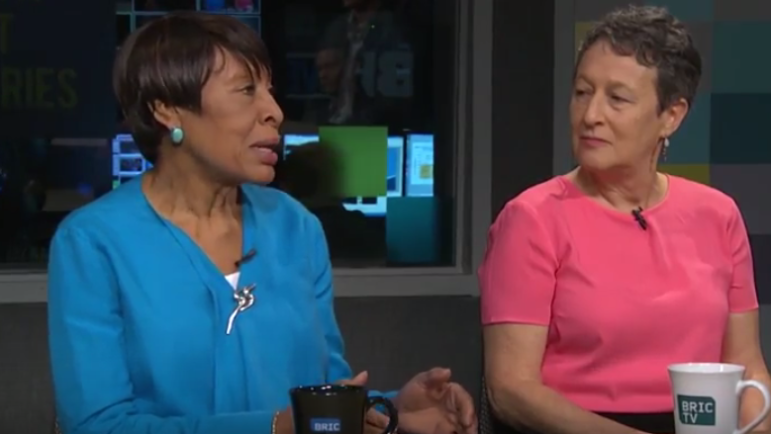
BRIC-TV
Dr. Monica Sweeney, a Clinical Professor at SUNY Downstate Medical Center (left), and Dr. Deborah Kaplan, an assistant commissioner at the city's Department of Health and Mental Hygiene,
Statistically speaking, during the time you’re watching the video segment below, three new New Yorkers will be born somewhere in the city—three of the 120,000 or so births that occur here in a typical year. Most of those babies and their mothers get through the process in good health. But some moms end up very sick. That’s a problem called severe maternal morbidity — and it has been getting worse.
From 2008 to 2012, it shot up 28 percent in New York. And city statistics indicate race, poverty, age, access to healthcare and even whether a patient really wanted to have a baby all have dramatic effects on the risks different women face. Neighborhoods also matter: Central Brooklyn is the epicenter of SMM in New York City.
Reducing maternal morbidity is a goal of city health officials educators and providers. On Thursday’s BkLive, I was joined by Dr. Deborah Kaplan, the Assistant Commissioner for the Bureau of Maternal, Infant and Reproductive Health at the city’s Department of Health and Mental Hygiene, and Dr. Monica Sweeney, a Clinical Professor at SUNY Downstate Medical Center, where she is Chair of the Department of Health Policy and Management and the Vice Dean for Global Engagement.
The effort to fight maternal morbidity is part of the effort to reduce the more serious, if smaller, problem of maternal mortality. The U.S. has one of the worst rates of maternal mortality in the developed world, and it has edged higher in recent years. Every year, New York hospitals lose around three dozens mothers. The impact of such a death, as Sweeney notes in the video, is broad and devastating.
Click on the tabs below to scroll through charts depicting the problems.















